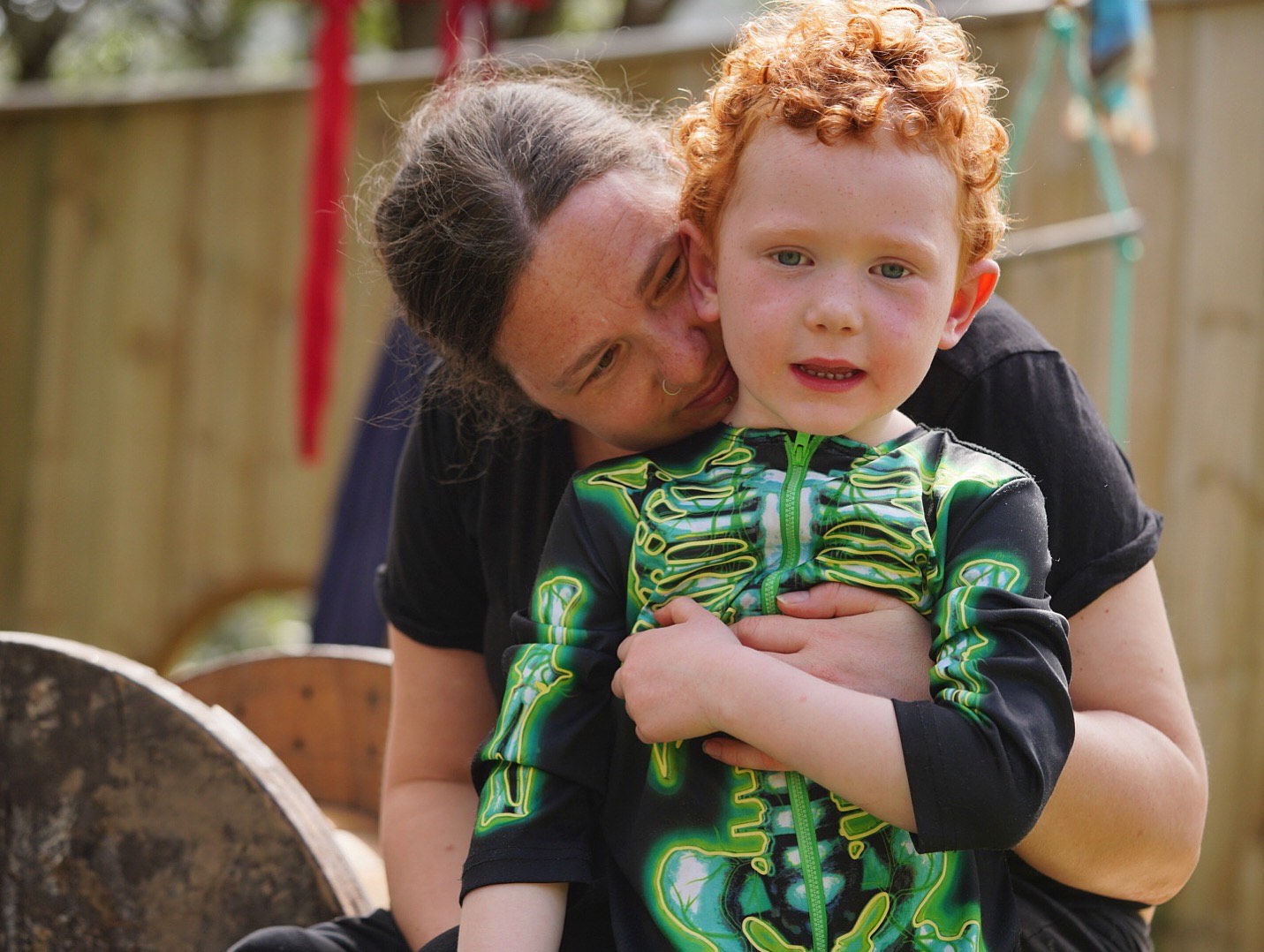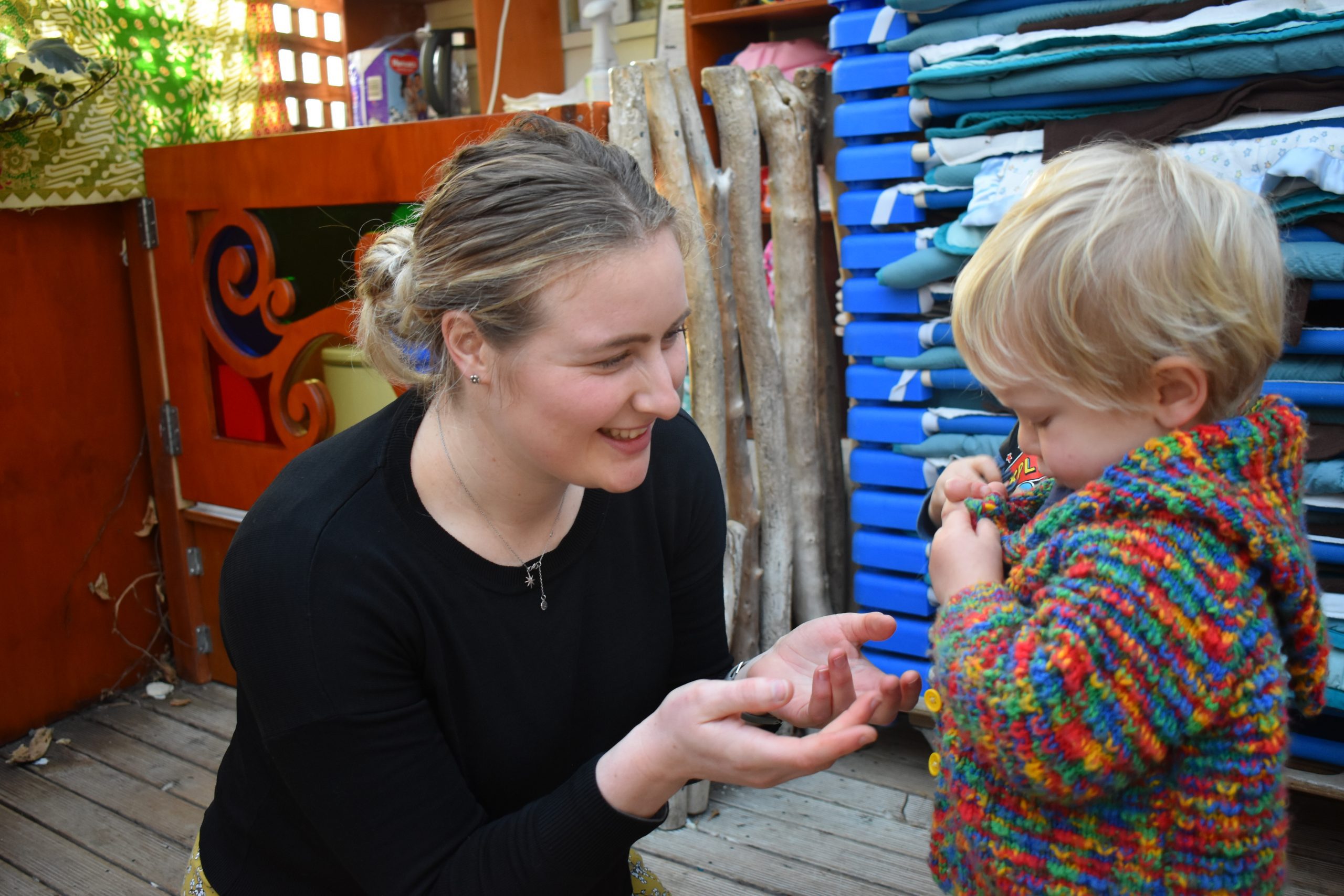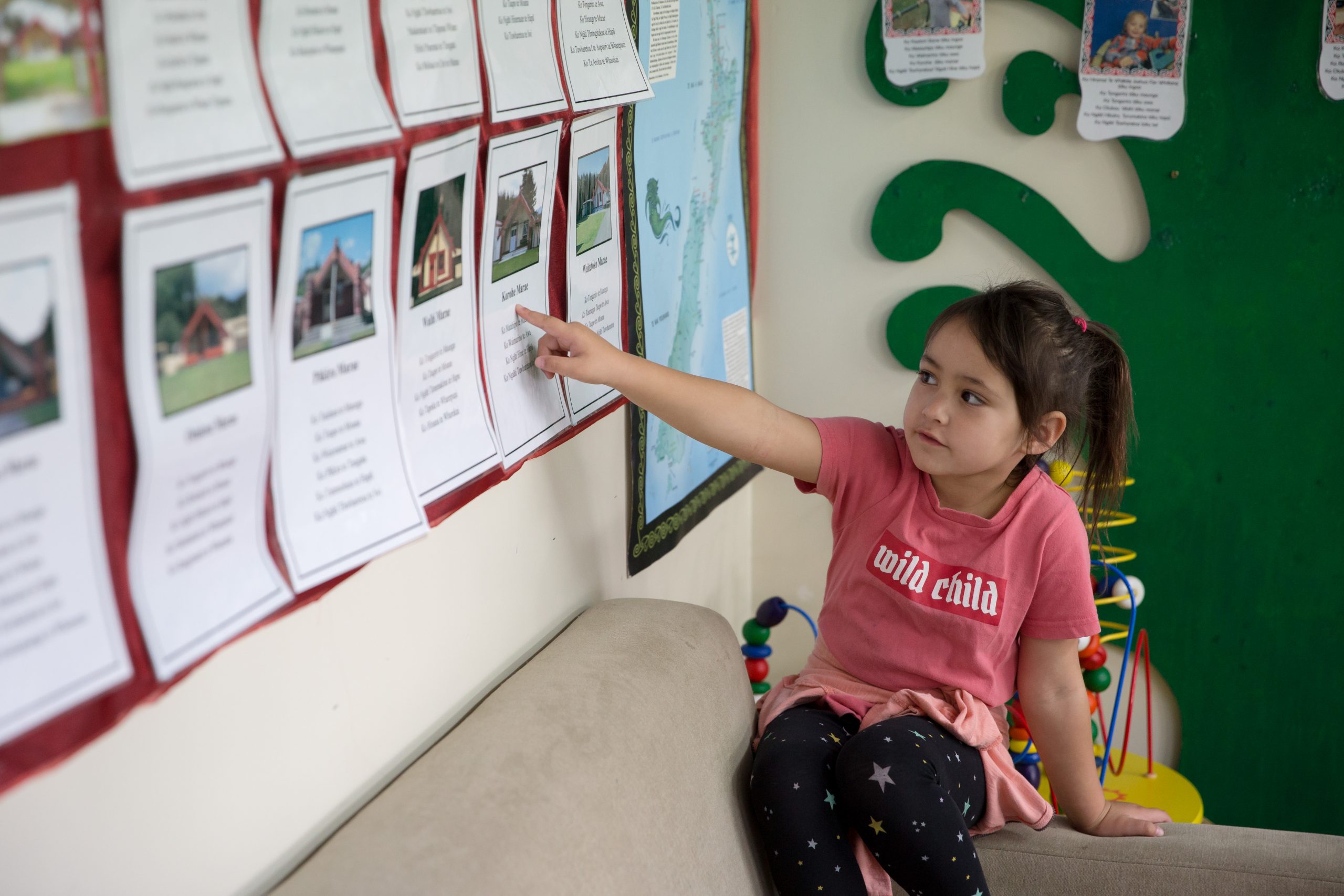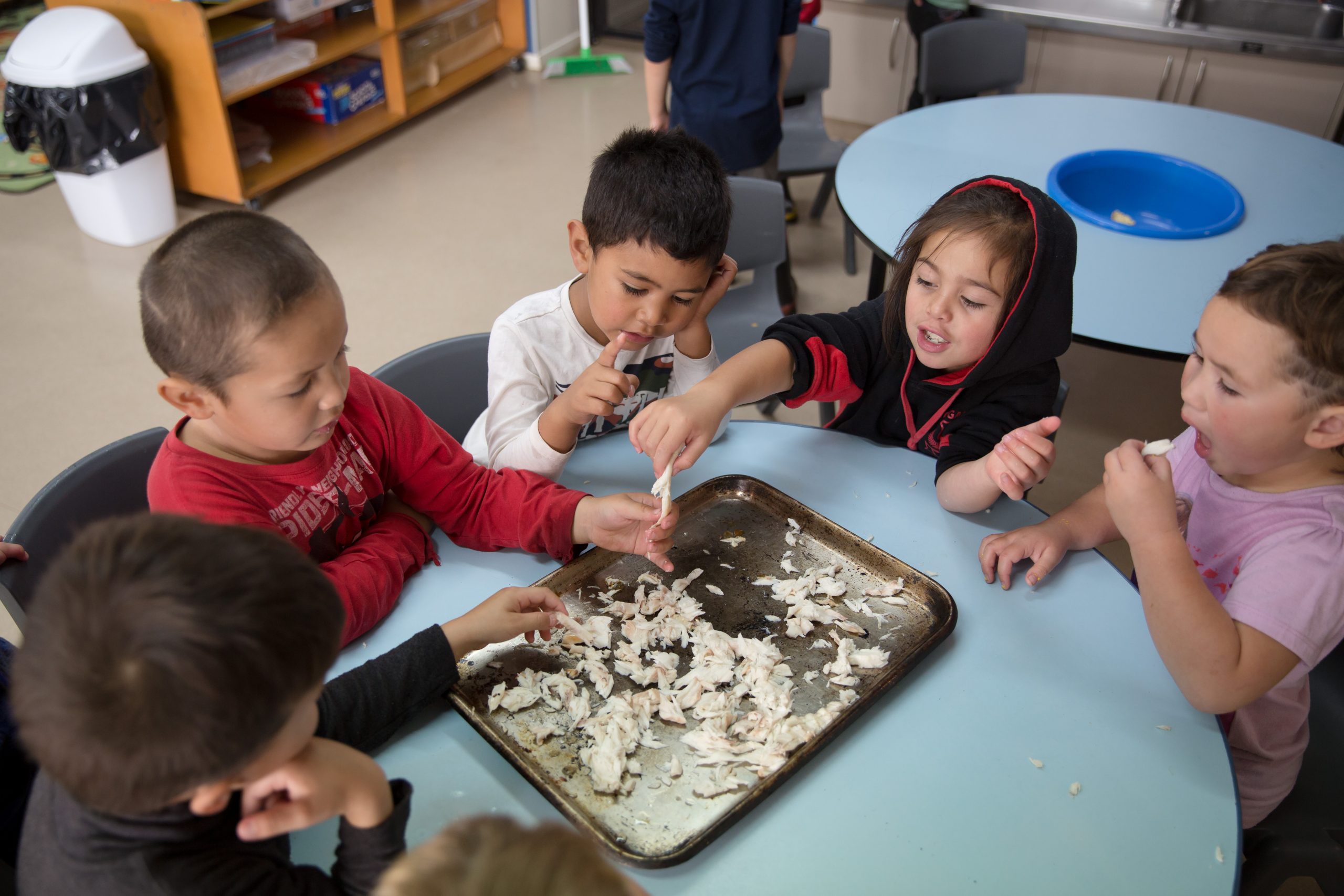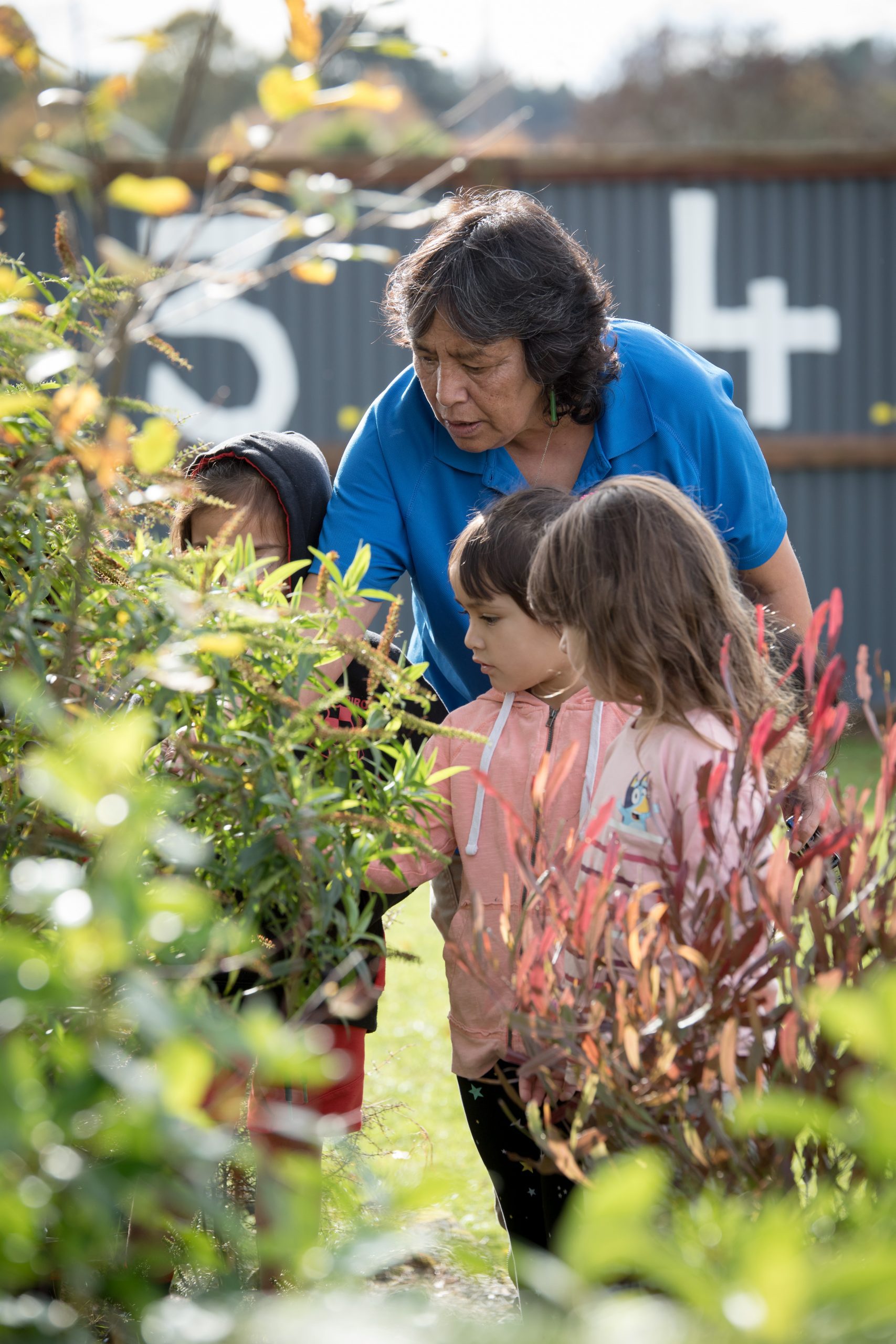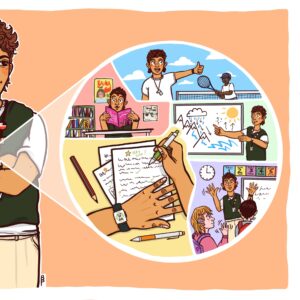“When a new family arrives with their child it’s a big deal,” says Caitlin Gubb. “We teachers have the honour of building a relationship with the child and the family at a critical time in their lives. If we get that relationship right, if they feel secure and comfortable, the child will be set up for life.”
Caitlin Gubb is talking about attachment theory and how it is practically applied at Kids’ Reserve in Thorndon, Wellington. The not-for-profit centre provides care and education for tamariki aged six months to five years, and the arrival of a child can be an anxious time for everyone. Returning-to-work parents are adjusting to the idea of giving their child over to new people, the child is beginning in an unfamiliar environment with new adults, and teachers are focused on a smooth transition.
Attachment theory was first developed in the late 1960s and has become a dominant premise in early childhood education. First advanced by English psychoanalyst John Bowlby, the theory contends that tamariki come into the world biologically predisposed to form attachments with others because this will help them survive. When they have secure relationships, young tamariki have confidence that their caregiver will be available, responsive to their needs and provide comfort in times of stress. A child attached to such a secure base will be emotionally satisfied, open to exploration and learning, and have a sense of wellbeing.
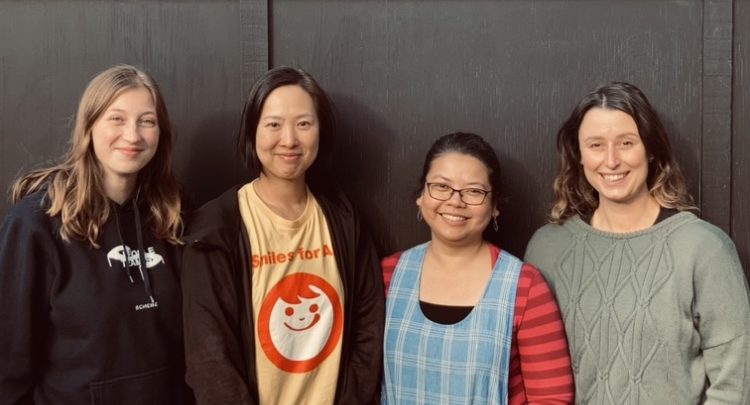
Kaiako Aimee Laplanche, Satoko Matsuda, Sita Widagdo and Caitlin Gubbs from Kids’ Reserve, Thorndon. Photo: Supplied.
At Kids’ Reserve there are two “pods” of under twos, each with nine children and three staff. Each educator is the primary kaiako for three children.
“Each child has a secondary kaiako, but in the initial phase it is very much a one-on-one relationship, with the key kaiako feeding, changing and sleeping the child. The child knows that the kaiako is there for them whenever they need them,” says Gubb.
This intensive relationship allows kaiako to develop an understanding of the child’s cues such as physical gestures, facial expressions and sounds. It is an approach based around Te Whāriki and heavily influenced by the work of Hungarian paediatrician Emmi Pikler, who advocates for adult-child relationships that acknowledge the child as a free and equal human being. Such relationships are trust-filled and involve respectful and unhurried care moments. “We don’t do anything to our babies. We do things with them,” says Gubb.
“We don’t do anything to our babies. We do things with them”
At Kids’ Reserve the secondary kaiako is introduced into the equation once the child is settled. “A secure child becomes open to new relationships. They know that the key kaiako is there for them if they feel vulnerable and they start to explore more. They are more open to learning,” says Gubb.
There is a considerable body of longitudinal research to support Gubb’s assertion. Studies show that attachment relationships affect social, emotional and cognitive development. There is also emerging evidence that attachment may play a role in infant brain development. All these factors impact a child’s wellbeing and continue to influence their wellbeing once they have grown into adulthood. This means that supporting secure attachment in early childhood is essential for growing a happy society.
Gubb points to the critical role of whānau in the smooth transition of children into the centre. “Before a child starts at Kids’ Reserve, we’ve had a number of visits and learned as much as we can from the parents about their child’s routines and preferences. We learn how the child communicates their needs and feelings,” she says. Communication with parents is ongoing through the digital tool Storypark and more informally at drop off and pick up times.
“We are lucky that our ratios give us the time for quality interactions with whānau. It’s especially important in the settling in period, because it is often a difficult transition for whānau as well as the child.”
At Ngaio Childspace, families are also central.
“It’s important for parents to build trust along with their child,” says Assistant Manager of the Wellington centre, Bridget McBride. “The deeper the relationship with the family, the better it is for the child. We become part of the same journey and the centre becomes a second home for the child and the family.”
Like Kids’ Reserve, Childspace operates on a primary kaiako model but takes it to another level. The primary kaiako for a group of tamariki moves with them through the age-group-based rooms of the centre, so that tamariki and whānau are supported by the same teacher right up until the transition to school.
“This continuity results in very strong relationships,” says teacher Hanna Russell. “Kaiako build a depth of knowledge about the child and the family, and vice versa. The teacher has a profound understanding of how each child learns, their personality and preferences. Rather than remaining in one area and becoming a specialist in a certain age group, teachers become expert in a particular group of children over time.”
Russell’s colleague Ali Porteous says that establishing a system of continuity reduces disruption for tamariki and whānau. “It minimises the impact of transitions,” she explains. “All that is happening is a movement of place, not a movement in relationships. We don’t see regression in children’s behaviour and learning the way we used to see before we set up this system.”
The Childspace team are keen to discount perceptions that primary kaiako create exclusive relationships between a single teacher and a child. Rather, the primary kaiako initiates and builds the first relationship, before ensuring that other relationships are formed within the room.
“The child learns that there are other adults there who can help them, and that they can be safe when the key kaiako isn’t around,” says McBride. “That way there is not so much pressure on one teacher.”
“Ours is a whole-team approach,” says Russell. “It’s wrap-around that’s the key to continuity. Each child develops strong relationships with the three adults working in their area and someone walking into the space probably couldn’t tell who is the child’s key kaiako.”
***
Although attachment theory has many benefits for tamariki hauora, critiques point to a Western bias, and the model’s failure to account for other cultural knowledge. Critics argue that the theory was developed at a time when Western families were becoming more urban and nuclear, and ignored the fact that cooperative childcare practices characterise most cultures around the world. Some have questioned whether the theory and the research it is based upon can be reliably applied across diverse communities.
Certainly, early attachment theory focused on a single dyadic relationship between carer and child, a view that contrasts with Māori understandings of attachment. Māori take a wider view of attachment, emphasising the child’s connections to whānau, whakapapa and whenua, and the early childhood curriculum Te Whāriki incorporates a te ao Māori approach.
First published in 1996, Te Whāriki was the first bicultural curriculum developed in Aotearoa New Zealand. It recognises that “relationships with people, places and things” are critical to learning. Culturally responsive practices occur when “whānau, communities and cultures are brought into the early childhood setting.”
Central Kids Kindergarten in Tūrangi exemplifies the bicultural nature of Te Whāriki. All teaching staff are Māori and whakapapa to Ngāti Tūwharetoa. The majority of kaiako were raised by their grandparents. “The world we were nurtured in influences the way we care for the tamariki here,” says Head Teacher Rose Ransfield. “Our experience aligns with Te Whāriki. We live that document.”
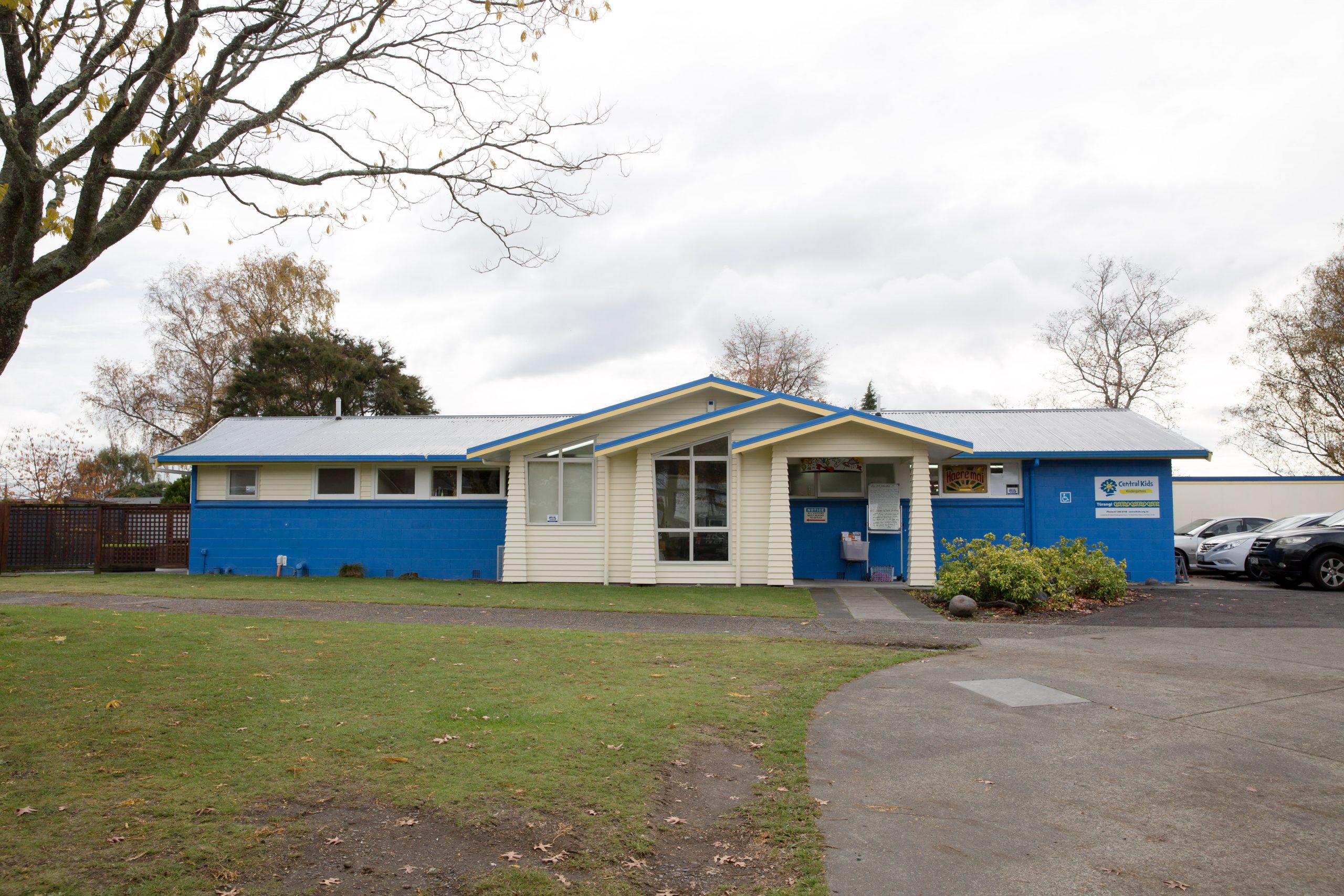
Ransfield describes an environment where whakawhanaungatanga is the key. That means embracing each child in culturally appropriate ways, recognising their whakapapa lineages, their heritage and their wider relationships to place.
“We awhi and respect the uniqueness of each child and their whānau,” says Ransfield. “It helps that we kaiako are all Ngāti Tūwharetoa with long connections to the town, so we often know the grandparents and great grandparents of our tamariki. We know their stories.”
When tamariki first arrive at the kindergarten, one person is designated as their primary kaiako and they spend a considerable amount of time with them. “If it means the kaiako carries that child to help them feel settled, we do that,” says Ransfield. Sometimes it can take a week or two before the child feels safe to leave the side of the primary kaiako, but they soon begin to form relationships with others.
“We awhi and respect the uniqueness of each child and their whānau”
“Tamariki will often find the adult they are most comfortable with and that’s fine,” says Ransfield. “However, the primary kaiako will still have overall responsibility and do all the reporting.”
Before they see or hear the awa that runs through their town, Tūrangi tamariki are aware of Pihanga, the mountain that overlooks the settlement.
“Our babies grow up knowing their mountain and their awa,” says Ransfield. “From a young age they can identify their marae from the photographs on the walls of the kindergarten and we build on their identity through waiata, haka and karakia. We link to whakapapa, the awa and the whenua by gathering kai, gutting and smoking fish and doing open fire cooking.”
***
While early childhood educators are doing extraordinary work to build deep, connected attachment relationships with tamariki, it is important to acknowledge the barriers to attachment that exist across the sector.
At the macro level, a nationwide teacher shortage is having a negative impact on tamariki and educators. Analysis of workforce trends show an increasing number of vacancies in the sector and significant “churn”. In a recent NZEI Te Riu Roa survey, 86 percent of ECE teachers acknowledge that teacher shortages impact negatively on tamariki, with a similar percentage commenting on personal impacts. Large numbers of those surveyed said they felt unable to give tamariki in their centres the time and attention they deserve.
Virginia Oakly, Early Childhood Representative on the National Executive of NZEI Te Riu Roa, says that the teacher shortage and low pay rates across the sector are creating a crisis. “Our children’s teachers love what they do, but they are stressed and overworked, and because of the low pay, other people just don’t want to take jobs in the sector,” she says.
“Our children’s teachers love what they do, but they are stressed and overworked”
Meanwhile, there is research to suggest that staffing issues create protocols and systems across the sector that also create barriers to effective attachment. The application of attachment theory requires that the children’s natural rhythms set routines, but Dr Raewyne Bary of Massey University surveyed 200 centres and found that organisational structures, rosters and staff rotations compromise the ability of teachers to bond with children. Roster changes make for a lack of consistency in who relates with children and can mean the quality of communication between kaiako is also compromised. Bary’s survey findings also reported widespread prioritisation of tasks over maintaining quality relationships.
“Close and affectionate relationships between infants/toddlers and teachers within early childhood settings are of vital significance,” comments Bary. Instead, she found teachers “constrained in discovering, or finding the ‘gift’ in children by their organisational cultures that prioritised tasks over attachment-type relationship and development opportunities.”
Whatever model of attachment is used by educators to honour and build relationships with tamariki, and to help them become securely attached, educators cannot provide unhurried moments of care without sufficient staffing and resources, and supportive organisational cultures. The question remains: what cost are we paying as a society by not giving educators the ability to support this critical time in a child’s life?
RESOURCES
Video about John Bowlby’s theory of attachment on School of Life
https://www.youtube.com/watch?v=3LM0nE81mIE
“Early Childhood Teacher-child Attachment: A Brief Review of the Literature” in He Kupu
www.hekupu.ac.nz/article/early-childhood-teacher-child-attachment-brief-review-literature



